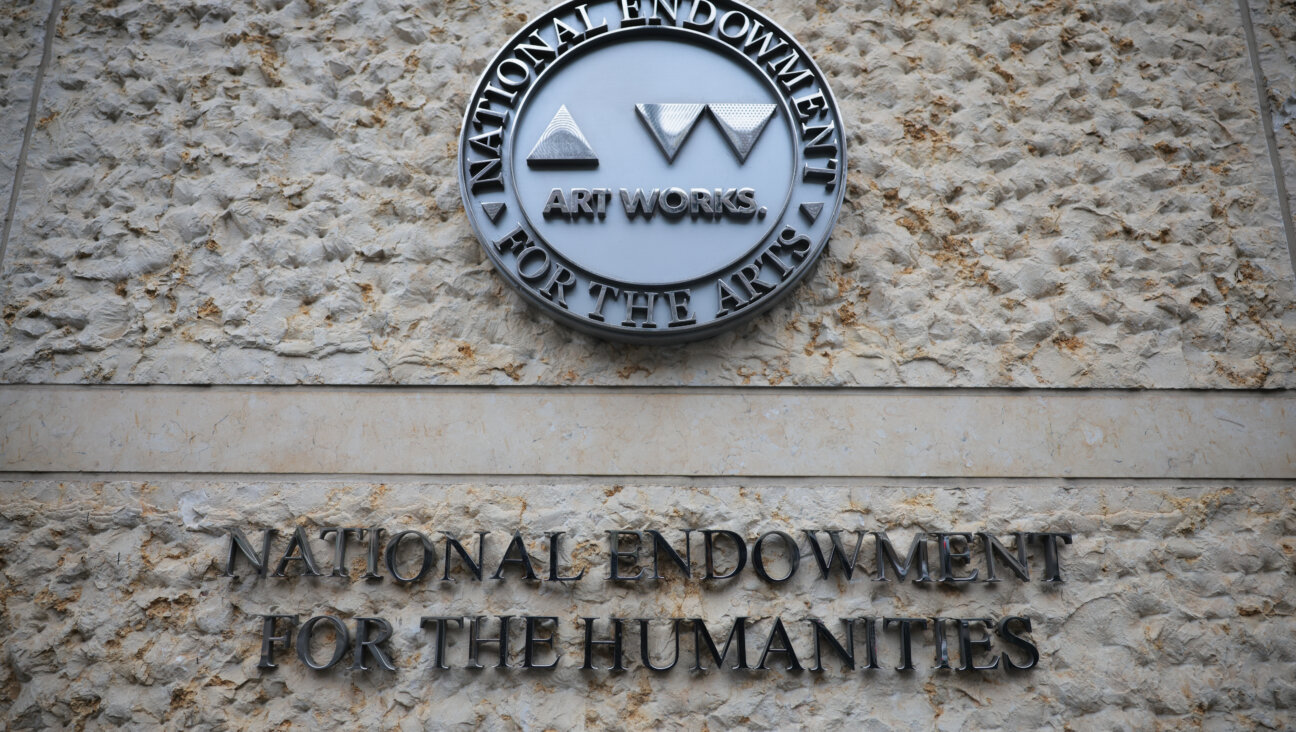Time for Straight-Talk About Assimilation
From now on, Jewish groups will likely think twice before using any variation on the word “assimilation.” That’s one lesson learned from the recent brouhaha over a 34-second commercial on Israeli television promoting the Jewish Agency’s Masa program, which brings young Jews to Israel for sustained periods of work, study and volunteering. The advertisement, which paired photos of young Jews on missing-person posters with the statement that “over 50% of Jews abroad are assimilating,” drew a firestorm of criticism on blogs and in news reports. Facing mounting international controversy, the Jewish Agency quickly killed the ad.
The issues raised by the ad, though, will not go away so easily. While the ad may have been clumsy in its execution, its central point is essentially correct: Large numbers of Jews around the world are disconnected from any Jewish communal activities.
Is there any reason to doubt that the Jewish people is suffering an erosion of its engaged membership? In the case of American Jews, we now lack an up-to-date national survey with precise numbers (or a national leadership sufficiently interested in basing its policies on hard data to produce one), but there is ample evidence of large declines in the numbers of Jews who participate in organized Jewish life in recent decades. Most established organizations have seen their membership numbers and donor base implode. And the many new initiatives that are rightly generating much excitement tend to attract only relatively small proportions of the Jewish population. When we add up all the activities of synagogues, federations, service programs, national organizations, cultural providers, educational institutions and the myriad start-ups, it is clear that vast populations of American Jews are steering clear of organized Jewish life.
Describing the world in which he works daily, a rabbi of my acquaintance talks about how, of necessity, he must focus only on the present. Why? Because the Jews he encounters have no connection to a Jewish past, and judging from the absence of any Jewish education among their grandchildren, they have no Jewish future.
So why, then, if there is a large kernel of truth to its claims, did the Masa ad elicit such a sharp reaction? In large part, it is because it was inferred that the 50% assimilation figure the ad cited refers to intermarriage rates, which in the United States reached that level in the late 1990s. Critics contend that the ad — though it does not actually mention the word “intermarriage” — gives offense to the children of Jews who intermarry, by implying that they are somehow “lost.” Many children of intermarriage, these critics note, are raised as Jews and go on to identify strongly with the Jewish people. This is, of course, true — but only up to a point. Unfortunately, this optimistic reading describes only a minority of intermarried families. The majority of intermarried families raise their children in a faith other than Judaism or in two faiths or no faith at all; not surprisingly, when they reach adulthood, most of those offspring do not identify as Jews.
Few would dispute that the Jewish community has a far better chance of retaining the allegiance of individuals raised in homes in which both parents are Jewish than in those where one parent identifies with a different religion. Indeed, wherever Jews are a minority community, intermarriage is a major factor in the contraction of the Jewish population. How, then, does it serve Jewish group interests to silence all discussion about the relationship between intermarriage and assimilation?
This hesitance to grapple seriously with the issue of intermarriage is part of a broader phenomenon: Speaking of threats to Jewish survival has become passé. Many argue that such discussions no longer serve to rally Jews; if anything, they turn people off. Moreover, advocates of this point of view tend to argue that if Jews are disengaged, it is because of failings in our institutions. If only we had more compelling programs and wiser leaders, if only we would cater more to the desires and preferences of younger generations, we would retain larger numbers of Jews, they say.
These are serious arguments, but the reality is that while creative leaders and innovative programs aimed at young Jews have brought in some people from the periphery, large numbers of American Jews — in some age groups, the majority — still do not participate in any form of Jewish public life. Those who reject the language of crisis when describing this state of affairs in favor of an appeal to individual preferences must explain how they propose to re-create a culture of Jewish responsibility on that basis. If we want to strengthen our community amidst the prevailing individualistic culture, we had better start with straight-talk about our current condition.
The reactions to the Masa ad have exposed a series of complex issues worthy of extended conversation within our community. Rather than view the ad solely as a dragon successfully slain, we would do well to see it as an opportunity to ask ourselves some tough questions about the best ways to build Jewish social capital and draw in disengaged Jews — as a chance to converse about what we expect ourselves and our fellow Jews to contribute to Jewish life. In this season of introspection, what could be more timely for us as a community?
Jack Wertheimer is a professor of American Jewish history at the Jewish Theological Seminary.
The Forward is free to read, but it isn’t free to produce

I hope you appreciated this article. Before you go, I’d like to ask you to please support the Forward.
Now more than ever, American Jews need independent news they can trust, with reporting driven by truth, not ideology. We serve you, not any ideological agenda.
At a time when other newsrooms are closing or cutting back, the Forward has removed its paywall and invested additional resources to report on the ground from Israel and around the U.S. on the impact of the war, rising antisemitism and polarized discourse.
This is a great time to support independent Jewish journalism you rely on. Make a Passover gift today!
— Rachel Fishman Feddersen, Publisher and CEO
Most Popular
- 1

Opinion My Jewish moms group ousted me because I work for J Street. Is this what communal life has come to?
- 2

Opinion Stephen Miller’s cavalier cruelty misses the whole point of Passover
- 3

Opinion Passover teaches us why Jews should stand with Mahmoud Khalil
- 4

Opinion I co-wrote Biden’s antisemitism strategy. Trump is making the threat worse
In Case You Missed It
-

Culture Jews thought Trump wanted to fight antisemitism. Why did he cut all of their grants?
-

Opinion Trump’s followers see a savior, but Jewish historians know a false messiah when they see one
-

Fast Forward Trump administration can deport Mahmoud Khalil for undermining U.S. foreign policy on antisemitism, judge rules
-

Opinion This Passover, let’s retire the word ‘Zionist’ once and for all
-
Shop the Forward Store
100% of profits support our journalism
Republish This Story
Please read before republishing
We’re happy to make this story available to republish for free, unless it originated with JTA, Haaretz or another publication (as indicated on the article) and as long as you follow our guidelines.
You must comply with the following:
- Credit the Forward
- Retain our pixel
- Preserve our canonical link in Google search
- Add a noindex tag in Google search
See our full guidelines for more information, and this guide for detail about canonical URLs.
To republish, copy the HTML by clicking on the yellow button to the right; it includes our tracking pixel, all paragraph styles and hyperlinks, the author byline and credit to the Forward. It does not include images; to avoid copyright violations, you must add them manually, following our guidelines. Please email us at [email protected], subject line “republish,” with any questions or to let us know what stories you’re picking up.













